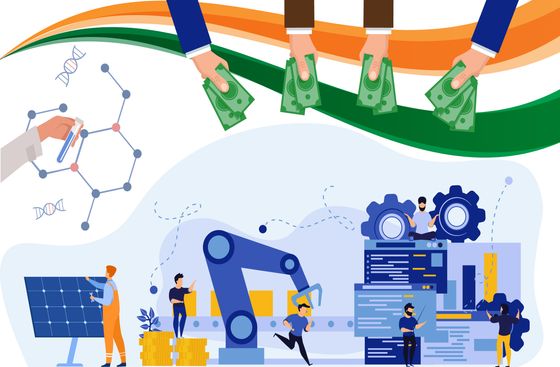India's PLI Scheme Triggers a Race in the Auto Sector

Like any other sector, the auto industry has been undergoing pandemic effects. Despite the present scenario, the automaker's giants such as Maruti Suzuki and its rivals have been working on their future plans. The most recently announced production-linked incentive (PLI) subsidy scheme put on offer has indeed ignited the urge amongst the automakers to utilise the PLI scheme.
According to sources, it’s been revealed that lately, Suzuki Motor Corp preferred to associate with its Japanese automaker and alliance partner, Toyota Motor to utilise the PLI scheme that could aid in escalating the exports from India. On this move, the firm’s board plans have already worked out. With this strategy, Suzuki is expected to make India its sole manufacturing unit for a certain range of products in the future. Likewise, automakers such as Hyundai and other automakers are also keen on uplifting their export of vehicles and spare parts in India.
As all the industries are stepping out of China the global factory has been hit hard by the reality in the past few months. This is when the companies choose to turn towards the other feasible manufacturing country being India. This has been a golden opportunity for India, especially for the auto and pharmaceutical sector, which witnessed an organic development in the last two decades.
However, to attract the auto sector government's PLI scheme's benefits could initially be limited to companies that have been exporting from India. Nonetheless, the benefits are expected to be offered based on an incremental increase in revenue from the base year2018-19 and the degree of localization in parts or sub-components.
The idea to Draw Attention
A similar PLI scheme with an outlay of  18,000 crore has been given to manufacturers of lithium-ion cells that power electric vehicle (EV) batteries, to transform India into a nucleus for manufacturing of EVs.
18,000 crore has been given to manufacturers of lithium-ion cells that power electric vehicle (EV) batteries, to transform India into a nucleus for manufacturing of EVs.
P. Balaji, chief financial officer, Tata Motors says, “The first thing we need (to do) is to secure the supply sources (for EV batteries) and this particular scheme will help establish supply sources. We have a big passenger vehicle market in India, and we should also have a market for batteries since it is an important component of an EV. This is an important step."
Tata Chemicals is likely to set up a lithium cell production capacity in Gujarat in the future and may utilize the benefits offered by the PLI scheme. This is anticipated to aid the domestic manufacturers of EVs such as Tata Motors and others. If the plan is carried out well, the scheme could probably open up a new manufacturing ecosystem across India in the future. Certainly, serious challenges are already noticed. The pandemic has wrenched the government’s economy, weakening its ability to offer the incentives that it has pledged to manufacturers across the board.
However, some majors are racing to progress nevertheless. Hyundai Motor intends to reinforce its presence in the Indian market, and is seeking to de-risk its services by slowly cutting down its reliance on China for components. Furthermore, Hyundai intends to source more parts from India for its current and new factories in South-East Asia. The company also proposes to heighten the procurement of parts for its factories in South America and Eastern Europe from India.
Close sources reveal, “The Chinese government has been providing incentives indirectly to firms that are exporting from China, especially the ones owned by the Chinese or in a joint venture with a local one. These (proposed) incentives will help India become a cost-competitive exporter. This will be good for the companies and will help the government attract more investments."
EVs Role
The Modi government has accelerated the very idea of EVs production for a long time now, as a measure to reduce fuel emissions and cut down pollution, However, the policy announcements such as the Faster Adoption and Manufacturing of Hybrid and Electric Vehicles (FAME) scheme didn't result positively.
The government also involved with managing EV and lithium cell producers to gauge demand and possibilities. Lithium-ion cells are needed for making batteries that power EVs, laptops and smartphones. Building a supply chain for lithium batteries has been one of key focus areas for India.
Possible Hitches
Basically, only certian automakers could qualify to apply for the proposed incentives. Moreover, there is also the imminent possibility that the government to lessen the  57,000 crore outlay on account to financial constraints. However, the second wave's lockdown has already had its effects and it remains to see how much the government stands by its promise of
57,000 crore outlay on account to financial constraints. However, the second wave's lockdown has already had its effects and it remains to see how much the government stands by its promise of  57,000 crore.
57,000 crore.
In a senior executive at an Indian auto manufacturer's words, high localization norms could come as a serious hurdle, given that vehicles that are presently exported from India have several China-sourced parts.
As most of the automakers converged on making EVs for their main markets in the upcoming years, export market for combustion engine vehicles may also be heated in the long term, however the ability of various firms to finance more may be constrained by the pandemic, says Puneet Gupta, director of consulting firm IHS Automotive.
He further adds, “Exports of automobiles from India have been declining in the last few years due to factors like the exit of companies like General Motors and the phasing out of certain models by companies like Nissan, which used to export substantially from India. It remains to be seen how this scheme will be able to revive vehicle exports, which command higher margins for companies. If government incentives come on time, then this can be beneficial for some auto companies and component manufacturers."
